new posts in all blogs
Viewing: Blog Posts Tagged with: NASA, Most Recent at Top [Help]
Results 1 - 25 of 38
How to use this Page
You are viewing the most recent posts tagged with the words: NASA in the JacketFlap blog reader. What is a tag? Think of a tag as a keyword or category label. Tags can both help you find posts on JacketFlap.com as well as provide an easy way for you to "remember" and classify posts for later recall. Try adding a tag yourself by clicking "Add a tag" below a post's header. Scroll down through the list of Recent Posts in the left column and click on a post title that sounds interesting. You can view all posts from a specific blog by clicking the Blog name in the right column, or you can click a 'More Posts from this Blog' link in any individual post.

By: Franca Driessen,
on 10/8/2016
Blog:
OUPblog
(
Login to Add to MyJacketFlap)
JacketFlap tags:
gravity,
NASA,
astronomy,
international space station,
outer space,
astronauts,
ISS,
final frontier,
Oxford Reference,
space travel,
G-force,
aerospace,
Lisa Brown,
*Featured,
Physics & Chemistry,
Science & Medicine,
Health & Medicine,
Online products,
World Space Week,
space flight,
Earth & Life Sciences,
Space Research,
Advanced Resistive Exercise Device,
aerospace medicine,
ARED,
microgravity,
Shuttle Atlantis,
Add a tag
World Space Week has been celebrated for the last 17 years, with events taking place all over the world, making it one of the biggest public events in the world. Highlighting the research conducted and achievements reached, milestones are celebrated in this week. The focus isn’t solely on finding the ‘Final Frontier’ but also on how the research conducted can be used to help humans living on Earth.
The post Space travel to improve health on earth appeared first on OUPblog.

By: Kathryn Roberts,
on 8/8/2016
Blog:
OUPblog
(
Login to Add to MyJacketFlap)
JacketFlap tags:
Alexander Vasilkov,
Einstein Theory,
gravitational potential,
Nick Gorkavyi,
repulsive force,
Journals,
NASA,
universe,
The Big Bang,
*Featured,
Physics & Chemistry,
oxford journals,
Science & Medicine,
RAS,
MNRAS,
Monthly Notices of the Royal Astronomical Society,
LIGO,
Add a tag
The Big Bang theory predicts that there was a powerful repulsive force at the beginning of the expanding of the Universe. A common hypothesis of the cause of the Big Bang is a short-term repulsive field, the so-called “inflanton”. Observations of supernovas have shown that the Universe is still expanding with acceleration.
The post A possible cause of the Big Bang and current acceleration of the Universe appeared first on OUPblog.

By: Priscilla Yu,
on 12/17/2015
Blog:
OUPblog
(
Login to Add to MyJacketFlap)
JacketFlap tags:
Oxford Atlas,
Oxford Atlas Place of the Year,
Charon,
Place of the Year 2015,
POTY 2015,
dwarf planet,
Robert Massey,
Books,
Geography,
NASA,
planets,
astronomy,
outer space,
milky way,
Place of the Year,
solar system,
Pluto,
POTY,
New Horizons,
Editor's Picks,
*Featured,
Science & Medicine,
Add a tag
This July, a NASA space probe completed our set of images of the planets, at least as I knew them growing up. New Horizons, a probe that launched back in 2006, arrived at Pluto and its moons, and over a very brief encounter, started to send back thousands of images of this hitherto barely known place.
The post Place of the Year nominee spotlight: Dwarf planet Pluto appeared first on OUPblog.
By:
Sue Morris @ KidLitReviews,
on 11/9/2015
Blog:
Kid Lit Reviews
(
Login to Add to MyJacketFlap)
JacketFlap tags:
Children's Books,
NonFiction,
Middle Grade,
Series,
NASA,
planets,
stars,
Books for Boys,
outer space,
astronauts,
Capstone Press,
Hubble,
4stars,
Library Donated Books,
Emma Carlson Berne,
Totally Wacky Facts about Space,
Add a tag
Totally Wacky Facts About Space Series: Mind Benders Written by Emma Carlson Berne Capstone Press 8/01/2015 978-1-4914-6526-4 240 pages Ages 8—12 “Ever wondered what astronauts do with their dirty underwear? Or which astronaut played golf on the moon? If you’re looking for wacky factoids and out-of-this-world trivia, this book has it …

By: KatherineS,
on 10/9/2015
Blog:
OUPblog
(
Login to Add to MyJacketFlap)
JacketFlap tags:
water on mars,
science,
space,
Moon,
mars,
NASA,
planets,
Water,
astronomy,
VSI,
physics,
Very Short Introductions,
Phoenix,
A Very Short Introduction,
Editor's Picks,
*Featured,
Physics & Chemistry,
Science & Medicine,
david rothery,
Earth & Life Sciences,
VSI online,
Moons: A Very Short Introduction,
calcium perchlorate,
Planets: A Very Short Intoduction,
Add a tag
The discovery of water on Mars has been claimed so often that I’d forgive anyone for being skeptical about the latest announcement. Frozen water, ice, has been proven on Mars in many places, there are lots of ancient canyons hundreds of kilometres long that must have been carved by rivers, and much smaller gullies that are evidently much younger.
The post NASA discovers water on Mars again: take it with a pinch of salt appeared first on OUPblog.

By: KatherineS,
on 7/31/2015
Blog:
OUPblog
(
Login to Add to MyJacketFlap)
JacketFlap tags:
NASA,
planets,
astrology,
VSI,
physics,
Very Short Introductions,
Pluto,
space travel,
*Featured,
Images & Slideshows,
Science & Medicine,
moons,
Earth & Life Sciences,
VSI online,
astroscience,
Charon,
David A. Rothery,
Moons: A Very Short Introduction,
Tombaugh,
science,
space,
photographs,
Add a tag
NASA’s New Horizons probe swept past Pluto and its moons at 17 km per second on 14 July. Even from the few close up images yet beamed back we can say that Pluto’s landscape is amazing. Charon, Pluto’s largest moon, is quite a sight too, and I’m glad that I delayed publication of my forthcoming Very Short Introduction to Moons so that I could include it.
The post Pluto and Charon at last! appeared first on OUPblog.

By: Joe Hitchcock,
on 6/16/2015
Blog:
OUPblog
(
Login to Add to MyJacketFlap)
JacketFlap tags:
Books,
History,
NASA,
comet,
Europe,
galileo,
rosetta,
solar eclipse,
Galileo Galilei,
*Featured,
Physics & Chemistry,
Science & Medicine,
Churyumov-Gerasimenko,
European space agency,
Galileo’s visions,
Marco Piccolino,
Nicholas J. Wade,
Piercing the spheres of the heavens by eye and mind,
rosetta comet,
rosetta space program,
sun spots,
Add a tag
For some people, recent images of the Rosetta space program have been slightly disappointing. We expected to see the nucleus of the Churyumov-Gerasimenko comet as a brilliantly shining body. Instead, images from Rosetta are as black as a lump of coal. Galileo Galilei would be among those not to share this sense of disappointment.
The post From Galileo to Rosetta appeared first on OUPblog.

By:
[email protected],
on 3/27/2014
Blog:
Perpetually Adolescent
(
Login to Add to MyJacketFlap)
JacketFlap tags:
Books,
science fiction,
fiction,
space,
sci-fi,
survival,
mars,
NASA,
stranded,
survival story,
castaway,
Book Reviews - Fiction,
andy weir,
astronaught,
manned mission to Mars,
Mark Watney,
the martian.,
Add a tag
 This was of the funnest books I can remember reading in a long time. Gripping, funny and told in a totally original and authentic voice you can’t help but be hooked in by this part-Apollo 13, part-Castaway survival story.
This was of the funnest books I can remember reading in a long time. Gripping, funny and told in a totally original and authentic voice you can’t help but be hooked in by this part-Apollo 13, part-Castaway survival story.
Mark Watney is an astronaut, part of the third manned mission to Mars. Six days after landing on Mars a fierce dust storm forces Mark and his crewmates to abandon the planet. However during the evacuation Mark is left behind. Now he must work out how is going to survive on Mars until the next resupply mission. In two years time.
The majority of the book is told via Mark’s log entries detailing his survival. The log is written in a beautifully sarcastic tone where outright panic is only a hair’s breath away. There is plenty of self-deprecating humour and the log format works perfectly in detailing Mark’s day-to-day survival.
Mark is completely stranded. He has no way of communicating with his crewmates or NASA. He only has enough food and water to last half the time he needs. Mark puts to work his skills as an engineer and botanist to figure out if he can survive. The how is one of the most entertaining reads you will come across. Full of insane (but practical) problem solving you are glued to the book wanting to find out how Mark gets himself out of each new predicament he finds himself in. I defy anyone to be able to put this down once they start!
Buy the book here…

By:
Robin Brande,
on 3/23/2014
Blog:
Robin Brande
(
Login to Add to MyJacketFlap)
JacketFlap tags:
NASA,
Astronauts,
Bravery,
Overcoming Fear,
Space Travel,
Space Station,
Space Program,
Chris Hadfield,
Videos That Make Us Happy,
Fear vs. Danger,
Going Blind in Space,
Space Accidents,
Courage,
Add a tag
I’m afraid of a nice variety of things: Sharks. Going too fast on skis. Vomiting in public. You know, the usual.
That’s why I enjoyed hearing from this astronaut, Chris Hadfield, about the difference between danger and fear, and some strategies for changing your brain’s habitual reaction to your habitual fears. It might involve walking through a hundred spider webs, or in my case, pointing my skis downhill a little more often instead of defaulting to the snowplow. I don’t know what to say about the vomiting fear, since I don’t plan on doing it in public more often just to reassure myself it’s okay. Because I’m pretty sure it’s not.
Anyway, here’s a fascinating talk by Astronaut Hadfield that includes some beautiful images of space and earth and a very relaxing tune at the end. And in between, some very solid ideas about becoming braver. Enjoy!

By: AlanaP,
on 12/3/2012
Blog:
OUPblog
(
Login to Add to MyJacketFlap)
JacketFlap tags:
Geography,
mars,
NASA,
telescope,
curiosity,
place of the year,
hubble,
Atlas of the World,
POTY,
rover,
curiosity rover,
Place of the Year 2012,
poty 2012,
mars’,
Social Sciences,
Editor's Picks,
*Featured,
Add a tag
MARS!
It’s a city! It’s a state! It’s a country! No — it’s a planet! Breaking with tradition, Oxford University Press has selected Mars as the Place of the Year 2012.
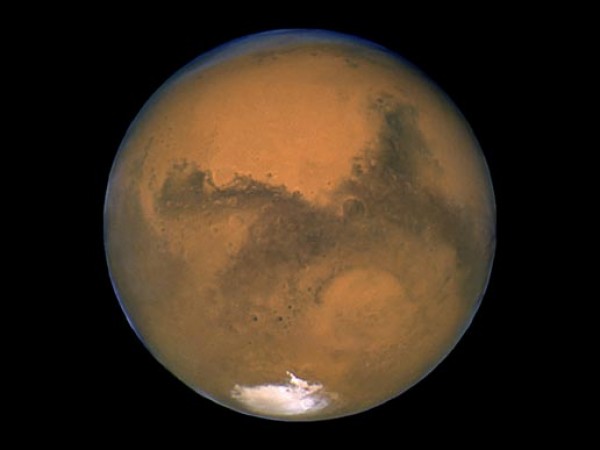
A close-up of Mars by NASA's Hubble Space Telescope. Image Credit: NASA
Mars, visible in the night sky to the naked eye, has fascinated and intrigued for centuries but only in the past 50 years has space exploration allowed scientists to better understand the red planet. On 6 August 2012, NASA’s Curiosity Rover landed on Mars’ Gale Crater, and by transmitting its findings back to Earth, Curiosity has made Mars a little a less alien. Among many other accomplishments, Curiosity has swallowed Martian soil and discovered an ancient stream bed. Today, NASA is expected to make a possibly mars-shattering announcement at the annual meeting of the American Geophysical Union.
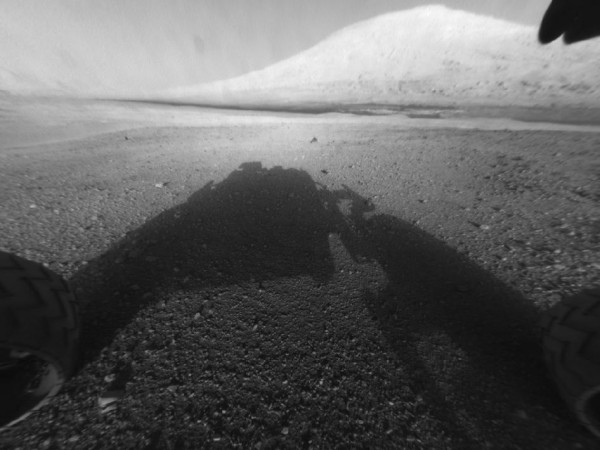
Mount Sharp, Curiosity Rover's goal. Image credit: NASA/JPL-Caltech
With an eye to the future of scientific discovery, Oxford University Press has chosen Mars in celebration of the place that has kept Earthlings excited and engaged this year. Your votes, combined with the votes of OUP employees, and the opinion of our expert Atlas of the World committee, easily led to Mars’s victory, outperforming Syria, London, Calabasas (California, USA), Greece, Istanbul, CERN, Senkaku/Diaoyu Islands, Artic Circle, and Myanmar/Burma.
Here are some of the many reasons why we’re so excited about Mars:
- While scientists have been mapping Mars from afar since the 19th century, it still represents the new and unknown — the fascination of cartographers and atlas-makers.
- Space exploration! Astrophysics! Astronomy! Geophysics! Astrobiology! There’s much to know about the universe and Earth’s place in it, and Mars is just one fascinating piece in the puzzle.
- Mars is home to the highest peak in the Solar System (Olympus Mons), but no life forms (as far as we know).
- Space exploration poses problems for traditional international diplomacy. The Outer Space Treaty is only the beginning of a complex legal framework.
- Although named after the Roman god of war, Mars acts as a muse to some of the great writers and artists, including H.G. Wells and David Bowie.
- Did Mars Curiosity steal your iPod? Curiosity wakes up to these tracks and premiered will.i.am’s Reach for the Stars by beaming the song back to earth. Even Britney Spears wants to know more.
- Mars continues to inspire new generations to study, to dream, and to stay curious.
We’ll be looking in depth at various facets of Mars on the OUPblog this week. You can check back here for the latest posts. We invite your comments and hope that you continue to stay curious!
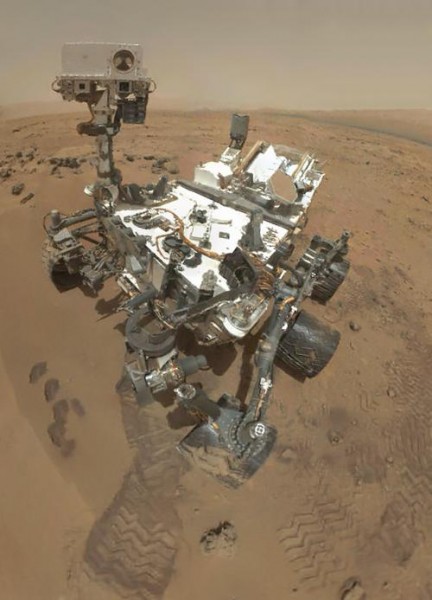
Curiosity Rover takes a self-portrait, reminding you to stay curious, OUPbloggers. Image Credit: NASA/JPL-Caltech/Malin Space Science Systems
Oxford’s Atlas of the World — the only world atlas updated annually, guaranteeing that users will find the most current geographic information — is the most authoritative resource on the market. The Nineteenth Edition includes new census information, dozens of city maps, gorgeous satellite images of Earth, and a geographical glossary, once again offering exceptional value at a reasonable price.
Subscribe to the OUPblog via email or RSS.
Subscribe to only geography articles on the OUPblog via email or RSS.

 |
| Ankylosaur from Museum of Ancient Life, Utah |
Or something like that. Last week, the Washington Post reported the
finding of a dinosaur footprint on the land of NASA's
Goddard Space Flight Center in Maryland. The track is believed to belong to an armored dinosaur called a nodosaur, a relative of the more famous
Ankylosaurus. The footprint is about fourteen inches long and hails from around 112 million years ago (Early Cretaceous). That's roughly the same time as the
Glen Rose dinosaur tracks, just north of Waco (they're the ones I based the footprints in
CHRONAL ENGINE on).
Goddard Space Flight Center, NASA's first space center, was established in 1959. They employ around 10,000 engineers and scientists and other personnel, and are responsible for a variety of earth and outer space explorer satellites, going back to the 1950s with the
Project Vanguard.
All the equipment, and look they found in their own back yard. :-).
.jpeg?picon=3324)
By: Keith Mansfield,
on 8/6/2012
Blog:
Keith Mansfield
(
Login to Add to MyJacketFlap)
JacketFlap tags:
space,
Mars,
NASA,
JPL,
Publishing Industry,
Johnny Mackintosh,
Clara Mackintosh,
literary characters,
Mars Curiosity,
Gale Crater,
sheepdog on Mars,
Add a tag
In case you missed it, Johnny Mackintosh (and Clara and Bentley, and even me) only went and landed on Mars this morning: read all about it!
We’re all here, etched onto the back of the Mars Curiosity rover, in the Gale Crater:



.jpeg?picon=3323)
By: Keith Mansfield,
on 8/5/2012
Blog:
JohnnyMackintosh.com
(
Login to Add to MyJacketFlap)
JacketFlap tags:
Book news,
History,
Science,
Doctor Who,
Space,
Viking,
NASA,
Ray Bradbury,
JPL,
Steven Moffat,
arnold schwarzenegger,
David Bowie,
Carl Sagan,
Total Recall,
Battle for Earth,
John Carter,
Len Wiseman,
The Martian Chronicles,
Edgar Rice Burrows,
Mars Curiosity,
Mars Sojourner,
opportunity rover,
spirit rover,
Add a tag
This morning at 6.31 am (British Summer Time), Johnny and Clara Mackintosh (and their Old English sheepdog, Bentley) made history: thanks to NASA and its Mars Curiosity rover, they became the first literary heroes to literally land on another world. And all broadcast live in Times Square – wow!

Johnny, Clara and Bentley, lowered to the Martian surface on the back of Curiosity (courtesy JPL)
The descent was scary (I wrote a piece about it for Bookzone4Boys) – even NASA had described it as “seven minutes of terror”. Eventually the Mars Science Laboratory landed by “skycrane” in Gale Crater, a perfect location to examine millions of years of Martian geology in one go. Onboard was a microchip onto which had been etched the names of some of the people of Earth, the very first ambassadors to land on another planet. And among those names were:
- Johnny Mackintosh
- Clara Mackintosh
- Bentley Mackintosh
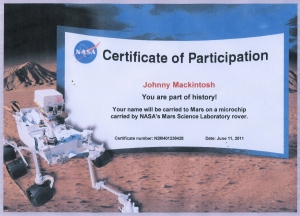
I confess I’m delighted to say “Keith Mansfield” was also included. 
Some great fictional stories have been set on Mars, but the paper or celluloid that tells them remains firmly grounded here on our island Earth. John Carter may have disappointed in cinemas lately, but Edgar Rice Burroughs’ series of “Barsoom” books are classics. A film that brought the red planet properly to life saw the now-Governator of California star as Doug Quaid in Dutch director Paul Verhoeven’s 1990 masterpiece, Total Recall. Why anyone feels the need to remake a movie that was originally so stunning is a mystery, but I’ll reserve judgement until I’ve seen Len Wiseman’s remake.
As a child I grew up reading the late, great Ray Bradbury, whose thoughtful Martian Chronicles helped inspire the stories I’ve written. In the first two Johnny Mackintosh books there are mentions of Mars and Johnny and Clara always intend to go there, yet somehow they never quite get round to it. In Battle for Earth they finally make the trip (I won’t spoil it for future readers by saying whether or not they find Martians).
David Bowie famously sang “Is there life on Mars?” and in a fun Doctor Who tribute, Steven Moffat christened the first fictional human settlement “Bowie Base One”. I’ve written a few pieces on whether or not there’s life of some kind on the red planet over at my Keith Mansfield website.
We’ve always found Martian exploration difficult. On page 3 of Johnny Mackintosh: Battle for Earth we read:
“Johnny and Clara had been planing their first ever visit to Mars, with Johnny telling his sister about all the probes scientists had sent to the red planet, but which had mysteriously failed to arrive.”
and then, a little later on page 61:
“Early space probes had taken intriguing but inconclusive photographs of the Martian surface, showing what were called the Pyramids of Elysium, next to what appeared to be a gigantic human face gazing upward. Johnny had always meant to visit and see for himself. For his part, Alf was curious to hear about the probes that had gone missing, so Johnny repeated the conversation he’d had with Clara, in a little more detail. Given the great expense of space exploration, the failure rate for Mars was unusually high. It wasn’t only Beagle 2 that had bitten the dust as it neared the planet. Over the years, around half the missions launched had failed for one reason or another.”
Of course the “giant face” is no more than an optical illusion, but sometimes you can’t let details like that get in the way of a good story. I first came across the pyramids through Carl Sagan’s Cosmos and these don’t only feature in Johnny Mackintosh – Total Recall also centred around the mysterious “pyramid mine”.
Nowadays we know a huge amount about this near neighbour, not least because there are actually three satellites in permanent orbit around the red planet. In the 1970s we sent the twin Viking landers to search for life (you can see a third in the Smithsonain Air and Space Museum in Washington DC). These tantalized, but also frustrated. Given the track record of previous Mars missions, this one played it relatively safe so the spacecraft set down in what proved rather dull areas – and that’s where they remained. The great thing about Curiosity is that it’s mobile.
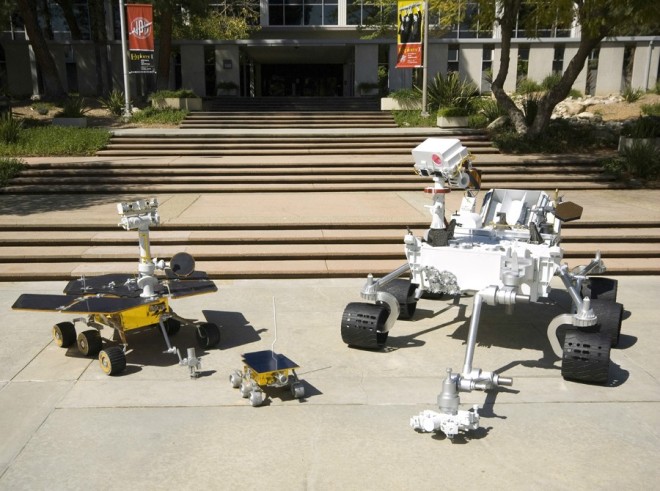
Mars rover family portrait showing Sojourner, one of Spirit/Opportunity and then Curiosity (courtesy NASA)
We’ve come a long way in a short space of time with Mars rovers. The first was Sojourner, a little add on to the Pathfinder mission that landed in 1997. It was the size of a remote-controlled child’s toy and could only travel a few metres from the main landing station, getting up close and personal with a few interesting nearby rocks. Sojourner started the ball rolling, and the momentum was magnificently maintained by another pair of twin landers, the Mars Exploration Rovers Spirit and Opportunity, which set down early in 2004.
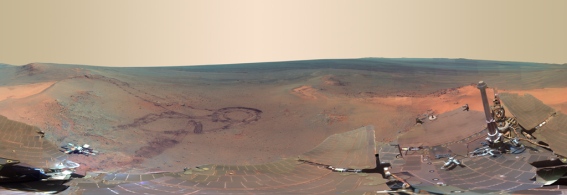
Mars panorama using composite images from Opportunity, showing the rover’s own tyre tracks (courtesy NASA)
Larger, more independent and mobile, it was hoped these two would function for around 90 days. Spirit lasted fully five years, becoming immobile on 2009 and finally ceasing communication in 2010. Opportunity is still going! These two have shown that we are more than capable, not just of landing on Mars, but traversing its surface.
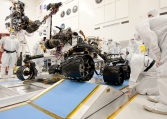
Curiosity being put through its paces on Earth (courtesy of JPL)
Curiosity is in a different league altogether. Weighing nearly a tonne, it’s around the size of a small car. It doesn’t move quite as fast, travelling at what’s almost literally a snail’s pace, but wherever it goes, Johnny, Clara and Bentley will go with it. I hope they and I are able to move across the surface of this faraway world for many years to come.
Buy the first book in the series, Johnny Mackintosh and the Spirit of London.
 Buy the third book in the series, Johnny Mackintosh: Battle for Earth in which Johnny and Clara visit Mars.
Buy the third book in the series, Johnny Mackintosh: Battle for Earth in which Johnny and Clara visit Mars.



By:
Claudette Young,
on 5/21/2012
Blog:
Claudsy's Blog
(
Login to Add to MyJacketFlap)
JacketFlap tags:
family,
writing,
Family history,
NASA,
Lord of the Rings,
Recreation,
Life,
Writing and Poetry,
Work-related,
Oceania,
Northumberland,
Flathead Lake,
Gravel road,
Add a tag
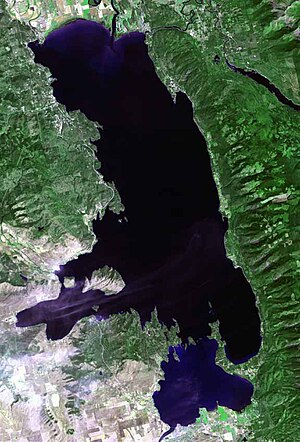
The raw satellite imagery shown in these images was obtain from NASA and/or the US Geological Survey. Post-processing and production by www.terraprints.com (Photo credit: Wikipedia)
Taking a day away from usual activities helps to restore a semblance of order to one’s life. Perspective is gained. Appreciation is elevated. New knowledge filters through the mind to lodge in memories.
Yesterday was a day of exploration into places unknown and challenging facts known. For me, it was also a time to take away snippets of useful information; the kind used in a twisted kind of way for story elements and character development. Those are the kind of relaxed and fun days that begin with one purpose and turn out as gold mines. Also, the experience felt much like going home to my dad’s family for the day.
We met up with friends, Sister’s distant cousins, in a small-town restaurant about an hour south of our locale. We had a nice lunch before heading south again to their home in an even smaller town. Our entire purpose for going on this jaunt was so that Sister could shoot the eclipse in an area where she could get good water-reflection shots.
During our scouting adventure, I was taken to places I’d never seen before; places that had escaped my notice when I’d lived in the area twenty years ago. As well, the cousins constantly pointed out places that related to their family histories.
“So and so built that ranch. Who is the latest owner, honey?” Cousin #2 asked as she pointed to the left to a grouping of buildings amid lush pastures. “The original barn’s gone now, of course.”
Gravel roads, dust flying from under the wheels of passing ranch trucks and cars, we made our way from reservoir to reservoir; each with points of interest. On the first we found swans that had been introduced to the waterways. The second, though smaller, was far more serene, more relaxing. Native ducks, muskrats, gulls, all played in the placid water. Further into the hills, we found rock chucks guarding their homes and new calves cavorting among adults.
At last we wound through forested hills up to MacDonald Lake, nestled in the Mission Range; a smaller lake than it used to be, only because it isn’t allowed to fill up the way it used to years ago. The deep teal, crystalline waters, surrounded by pine-covered slopes, beckoned to us. Trails radiated from its sides for the explorer who would challenge grizzlies in the area for prime fishing spots.
From the south-end approach I could only envision one scenario. I saw a scene straight out of
0 Comments on Family Histories on the Side as of 1/1/1900

The raw satellite imagery shown in these images was obtain from NASA and/or the US Geological Survey. Post-processing and production by www.terraprints.com (Photo credit: Wikipedia)
Taking a day away from usual activities helps to restore a semblance of order to one’s life. Perspective is gained. Appreciation is elevated. New knowledge filters through the mind to lodge in memories.
Yesterday was a day of exploration into places unknown and challenging facts known. For me, it was also a time to take away snippets of useful information; the kind used in a twisted kind of way for story elements and character development. Those are the kind of relaxed and fun days that begin with one purpose and turn out as gold mines. Also, the experience felt much like going home to my dad’s family for the day.
We met up with friends, Sister’s distant cousins, in a small-town restaurant about an hour south of our locale. We had a nice lunch before heading south again to their home in an even smaller town. Our entire purpose for going on this jaunt was so that Sister could shoot the eclipse in an area where she could get good water-reflection shots.
During our scouting adventure, I was taken to places I’d never seen before; places that had escaped my notice when I’d lived in the area twenty years ago. As well, the cousins constantly pointed out places that related to their family histories.
“So and so built that ranch. Who is the latest owner, honey?” Cousin #2 asked as she pointed to the left to a grouping of buildings amid lush pastures. “The original barn’s gone now, of course.”
Gravel roads, dust flying from under the wheels of passing ranch trucks and cars, we made our way from reservoir to reservoir; each with points of interest. On the first we found swans that had been introduced to the waterways. The second, though smaller, was far more serene, more relaxing. Native ducks, muskrats, gulls, all played in the placid water. Further into the hills, we found rock chucks guarding their homes and new calves cavorting among adults.
At last we wound through forested hills up to MacDonald Lake, nestled in the Mission Range; a smaller lake than it used to be, only because it isn’t allowed to fill up the way it used to years ago. The deep teal, crystalline waters, surrounded by pine-covered slopes, beckoned to us. Trails radiated from its sides for the explorer who would challenge grizzlies in the area for prime fishing spots.
From the south-end approach I could only envision one scenario. I saw a scene straight out of
0 Comments on Family Histories on the Side as of 1/1/1900





























